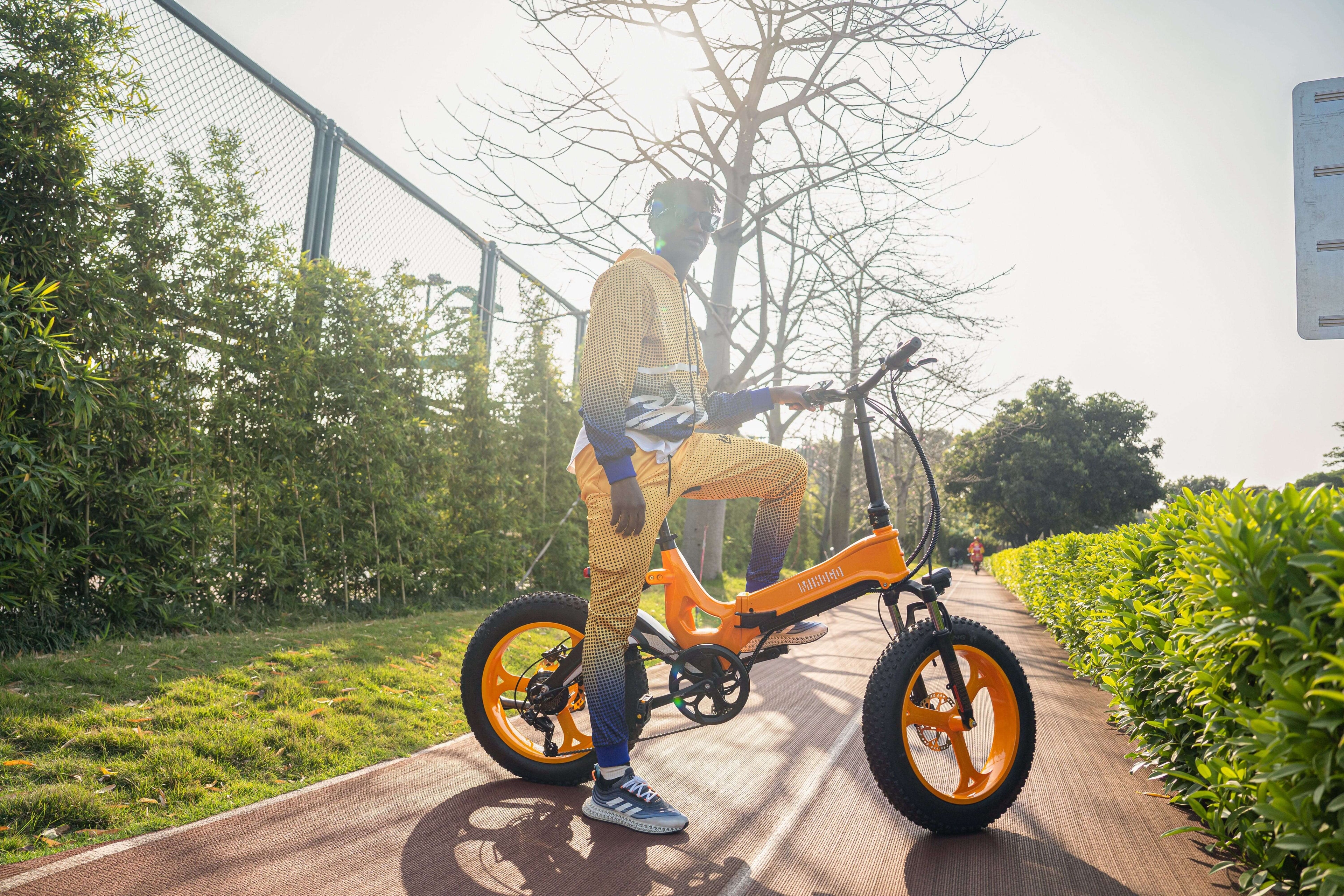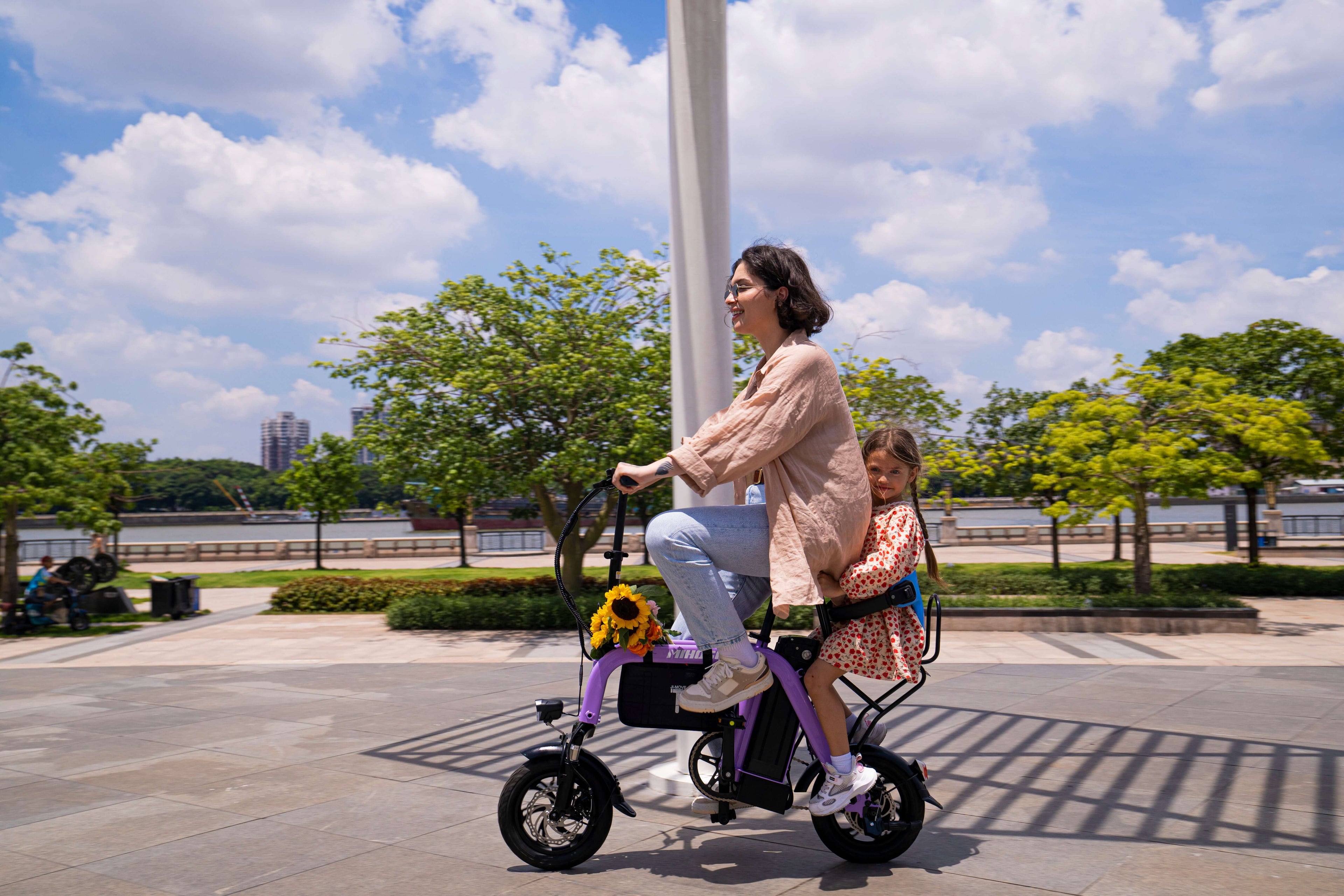What Are Modular Battery Systems?
Modular battery systems refer to e-bike power configurations that allow users to easily add, remove, swap, or upgrade battery components without tools or technical expertise. Think of it like building with blocks – each battery module is a separate component that works together to create your ideal range and power output.
Unlike traditional integrated batteries that are permanently mounted within the bike frame, modular systems prioritize user accessibility and customization. This revolutionary approach means you can start with a basic setup and expand your power capacity as your riding needs evolve.
The Science Behind Extended Range
The key to understanding modular battery performance lies in the numbers. Energy density, given in Wh/kg, shows the energy stored for each kilogram. When you combine multiple battery modules, you're essentially multiplying your available watt-hours without compromising the bike's handling characteristics.
For Mihogo riders, this translates to incredible flexibility:
- Mihogo Air750 Max: With its impressive 121-mile range, a modular system could potentially extend this to 200+ miles
- MIHOGO ONE Utility EBIKE: Already boasting 167 miles, modular batteries could push this workhorse beyond 300 miles
- MIHOGO RX 2.4: Transform the 40-mile commuter range into an 80+ mile touring machine
- Mihogo Mini: Upgrade from 62 miles to 120+ miles for extended adventures
Types of Modular Battery Configurations
Dual Battery Systems
Dual battery systems expand the capacity of a standard battery with a modular additional one. An integrated standard battery with a 500–630 Wh battery is combined with an optional, usually external, battery (250–500 Wh) which can be attached to the down tube of the bike. This configuration effectively doubles your riding range, making long-distance tours and extended commutes feasible without range anxiety.
Swappable Battery Systems
The ultimate in convenience, swappable systems allow you to carry spare batteries and exchange them in seconds. The ability to instantly replace depleted batteries eliminates charging downtime entirely. Professional couriers and delivery riders particularly benefit from this capability, maintaining productivity throughout their workday.
Parallel Battery Arrays
Advanced riders can connect multiple batteries in parallel configurations, maintaining voltage while dramatically increasing capacity. This setup is perfect for Mihogo's high-performance models like the Air750 Max, where sustained power output matters as much as total range.
Smart Battery Management in 2025
Modern modular systems aren't just about more power – they're about intelligent power management. Modern modular systems incorporate sophisticated battery management systems (BMS) that: 2025 models feature AI-assisted torque calibration, self-diagnostic systems, and swappable battery ecosystems.
These smart systems optimize:
- Charge distribution across multiple modules
- Temperature management to prevent overheating
- Cell balancing for maximum lifespan
- Power delivery based on riding conditions
Real-World Applications for Mihogo Riders
Urban Commuters (MIHOGO RX 2.4 & Mihogo Mini)
City riders benefit enormously from modular systems. The anxiety of running out of power mid-commute becomes obsolete when you can swap batteries or carry a backup module. The MIHOGO RX 2.4's folding design makes it easy to remove batteries for office charging.
Long-Distance Tourers (Mihogo Air750 Max)
With its carbon fiber construction and 750W motor, the Air750 Max becomes the ultimate touring machine when equipped with modular batteries. Riders can plan multi-day adventures knowing they can swap fresh batteries at strategic points.
Utility and Cargo Applications (MIHOGO ONE Utility)
The utility e-bike's 750W motor and robust design make it perfect for commercial applications. Modular batteries mean delivery riders can maintain peak performance throughout extended work shifts without charging downtime.
Recreational Riders (All Mihogo Models)
Weekend adventurers can customize their power setup based on planned activities. Short neighborhood rides might need just one module, while mountain trail expeditions could utilize the full modular array.
Installation and Compatibility
Most modular battery systems designed for Mihogo e-bikes feature:
- Tool-free installation with secure locking mechanisms
- Weatherproof connections rated for all-season riding
- Universal mounting compatible with standard frame designs
- Safety interlocks preventing accidental disconnection
The key is ensuring voltage compatibility with your Mihogo model's motor system. The Air750 Max and MIHOGO ONE Utility's 750W motors typically operate at 48V, while the RX 2.4 and Mini models work with 36V systems.
Charging Strategies for Modular Systems
Undoubtedly, removable batteries are easy to charge, as users can either choose to charge on or off the ebike. This flexibility opens up multiple charging strategies:
Rotation Charging
Keep one set of modules on the bike while charging another set indoors. Perfect for daily commuters who need consistent range.
Opportunity Charging
With portable modules, you can charge batteries at work, coffee shops, or any location with standard outlets. No more range anxiety during extended outings.
Solar Integration
Combine modular batteries with portable solar panels for truly off-grid adventures. The lightweight modules make this setup practical for touring riders.
Safety Considerations
Modular systems require robust safety features to prevent electrical hazards during battery swapping Modern systems include:
- Automatic disconnection when batteries are removed
- Overvoltage protection during module connection
- Temperature monitoring across all connected modules
- Short circuit prevention through smart connectors
Cost-Effectiveness of Modular Upgrades
While the initial investment in modular battery systems may seem significant, the long-term benefits are compelling:
- Gradual expansion: Start with one extra module and add more as needed
- Selective replacement: Replace individual modules rather than entire battery packs
- Future-proofing: Upgrade capacity without changing the entire e-bike
- Resale value: Modular systems increase your Mihogo's market appeal
Environmental Impact
Modular battery systems support sustainability goals through:
- Extended product lifecycle: Individual modules can be maintained and replaced
- Reduced waste: No need to discard entire battery packs for single cell failures
- Recycling efficiency: Smaller modules are easier to process at end-of-life
- Resource optimization: Use only the power you need for each ride
The Future of E-Bike Power
Manufacturers will likely emphasize modular e-bike battery systems that enable riders to easily swap out battery packs on the fly, eliminating downtime for charging. Swappable designs could revolutionize long distance riding by cutting charging times for batteries down significantly.
Industry trends point toward increased standardization, making cross-brand compatibility possible. This means your modular battery investment today could work with future e-bike purchases.
Choosing the Right Modular System for Your Mihogo
For Air750 Max Owners
Look for high-capacity modules (500Wh+) that match the bike's premium performance characteristics. Prioritize lightweight materials that won't compromise the carbon fiber frame's advantages.
For MIHOGO ONE Utility Users
Opt for rugged, weatherproof modules designed for commercial use. Quick-swap capabilities are essential for maintaining productivity in delivery applications.
For RX 2.4 Commuters
Choose compact modules that maintain the folding bike's portability. Look for systems that allow easy battery removal for office charging.
For Mini Adventurers
Select lightweight modules that preserve the bike's nimble handling characteristics while providing meaningful range extensions.
Installation Best Practices
- Verify compatibility with your specific Mihogo model's electrical system
- Follow torque specifications for all mounting hardware
- Test all connections before first ride
- Establish charging routines to maintain optimal battery health
- Regular maintenance of connection points and locking mechanisms
Conclusion
Modular battery systems represent the future of e-bike power management, offering unprecedented flexibility and range customization. For Mihogo riders, this technology transforms every model from the compact Mini to the powerful Air750 Max into a truly personalized transportation solution.
Whether you're commuting daily on the RX 2.4, hauling cargo with the MIHOGO ONE Utility, touring on the Air750 Max, or exploring neighborhoods on the Mini, modular batteries let you build exactly the range and power configuration you need.
The LEGO-block approach to e-bike batteries isn't just a metaphor – it's the reality of modern electric mobility. Start with your Mihogo's impressive baseline range, then build up your power system as your adventures demand more.
External Resources:
- Wikipedia: Electric Bicycle - Comprehensive overview of e-bike technology
- IEEE Spectrum: Battery Technology Advances - Latest developments in battery research
- Department of Energy: Electric Vehicle Batteries - Government perspective on battery innovation








